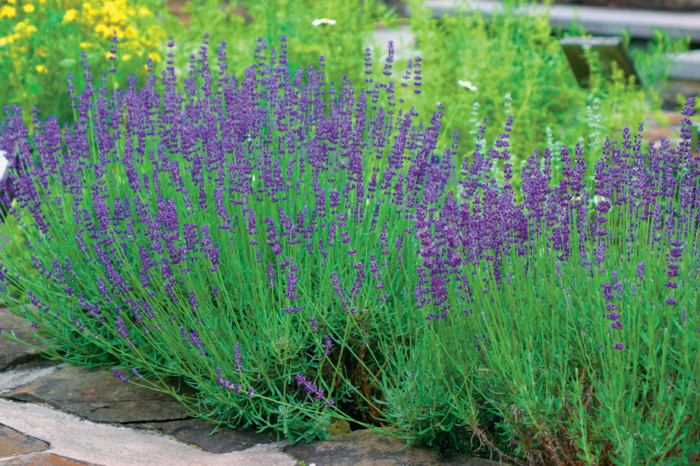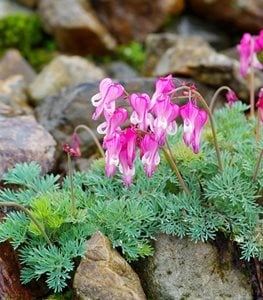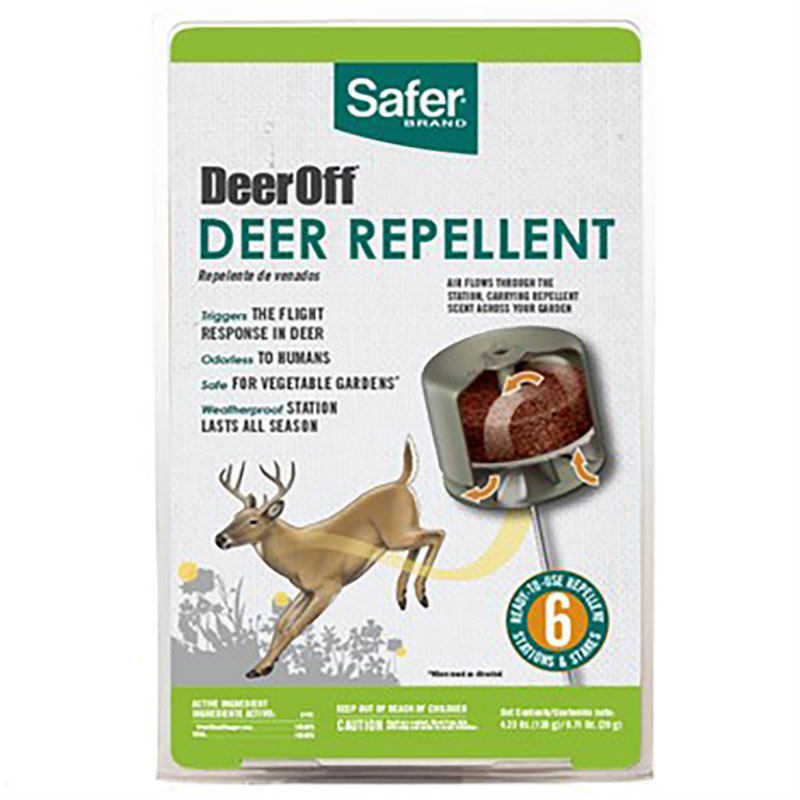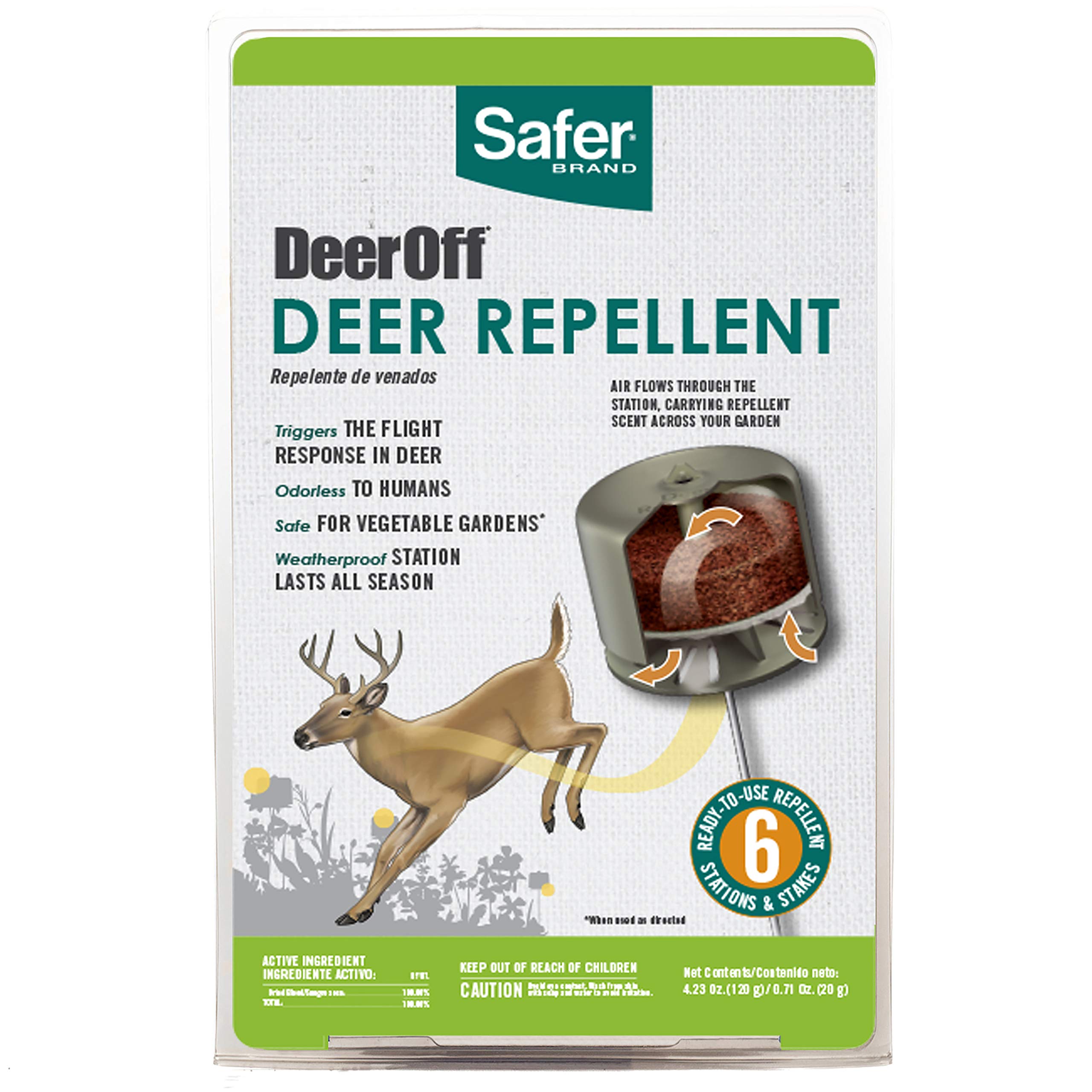Imagine stepping out into your garden, expecting to see your hard work in full bloom, only to find that deer have turned your plants into their personal salad bar. It’s frustrating, isn’t it?
You’re not alone. Many gardeners face this battle, but there’s good news. With the right deer repellent, you can protect your garden and keep it thriving. You’ll discover how these solutions can act as invisible shields, giving you peace of mind and a flourishing garden.
Stay with us, and you’ll learn exactly what you need to keep those graceful yet pesky visitors at bay.

Credit: www.finegardening.com
JUMP TO TOPIC
Why Deer Are Attracted To Gardens
Gardens are a sanctuary of beauty and tranquility, but they can also become a buffet for deer. You might wonder why your lush landscape draws these graceful creatures. It’s simple: gardens offer a smorgasbord of plants that deer find irresistible. As a gardener, understanding what attracts deer to your garden is the first step in keeping them at bay. Let’s dive into the specifics.
Common Garden Plants Preferred By Deer
Deer have a keen sense of taste, and they often favor certain garden plants. Roses, tulips, and hostas are among their top picks. These plants are not only delicious but also abundant in many gardens. Are you growing these in your backyard? If yes, you may be inadvertently inviting deer to dinner.
My neighbor once planted a bed of tulips, hoping for a colorful spring. Instead, her garden became a feeding ground for local deer. It was a lesson in understanding deer preferences. Knowing which plants to avoid or protect can save your garden from becoming a wildlife snack bar.
Seasonal Deer Activity Patterns
Deer activity fluctuates with the seasons. During spring and summer, they are more likely to visit gardens due to the availability of tender new growth. In fall, they prepare for winter by eating more to store fat.
If you’ve ever noticed deer munching away in your garden more during certain months, it’s not a coincidence. Observing these patterns can help you plan your deer repellent strategies. Consider beefing up your defenses during peak seasons.
Have you thought about adjusting your planting schedule based on these patterns? Timing can be a useful tool in your deer deterrent arsenal. By understanding when deer are most active, you can protect your garden more effectively.
In the battle against deer, knowledge is your greatest ally. Identify their favorite plants and keep an eye on seasonal trends. With these insights, you can enjoy your garden in peace without uninvited guests. What steps will you take to safeguard your garden today?

Credit: www.gardendesign.com
Types Of Deer Repellents
Deer can be a gardener’s nightmare, munching on plants and flowers. To protect gardens, many turn to deer repellents. These come in various types, each with unique features. Understanding the options helps in choosing the right one for your garden’s needs. Let’s explore these types to find the best fit for your garden.
Natural Repellents
Natural repellents use ingredients that deer dislike. These include garlic, eggs, and hot peppers. They often emit strong odors or tastes that repel deer. Many gardeners prefer natural options for their eco-friendly nature. They are safe for pets and the environment. You can make these at home or buy them in stores. Spraying them regularly ensures effectiveness.
Chemical Repellents
Chemical repellents contain synthetic ingredients. They offer a strong deterrent against deer. Many are available as sprays or granules. They work by creating an unpleasant smell or taste. Some contain predator urine, tricking deer into thinking danger is near. It’s vital to follow instructions carefully. Overuse can harm plants and soil.
Electronic Repellents
Electronic repellents use technology to keep deer away. These devices often emit sounds or lights. Motion sensors can trigger them when deer approach. Some release high-pitched sounds that deer dislike. Others flash lights to startle them. They are low-maintenance and cover large areas. Though effective, they require power sources.
Diy Deer Repellent Solutions
Gardens are a sanctuary for nature lovers. But deer can disrupt this peace. These elegant creatures can quickly munch away your hard work. DIY deer repellent solutions offer a practical way to protect your plants. Crafting your own repellent is cost-effective and easy. Plus, it allows you to use natural ingredients.
Homemade Spray Recipes
Creating a homemade spray is simple. You can use ingredients from your kitchen. Garlic and chili are excellent choices. Their strong smell keeps deer at bay. Blend garlic and chili with water. Then, strain the mixture. Pour the liquid into a spray bottle. Spray it on plants and garden beds. The strong scent will deter deer effectively.
Another effective recipe involves vinegar. Mix vinegar with water. Add a few drops of essential oil. Lavender or peppermint work well. Shake the bottle to mix ingredients. Spray this around your garden. It creates a barrier against deer.
Using Household Items
Household items can be surprisingly effective. Soap is a popular choice. Grate a bar of strong-scented soap. Spread the shavings around the garden. The smell confuses deer and keeps them away.
Human hair is another deterrent. Collect hair from a brush. Sprinkle it around the plants. The scent of humans scares deer. This method is natural and harmless.
Old CDs can also help. Hang them around the garden. Their reflection scares deer. This simple trick utilizes light to protect your plants.
Commercial Deer Repellent Products
Keep gardens safe with commercial deer repellent products. These solutions protect plants from hungry deer. Easy to apply, they offer effective defense against garden damage.
Deer can wreak havoc on your garden, turning your beautiful blooms into their personal buffet. Commercial deer repellent products can be a lifesaver in maintaining your garden’s beauty and health. These solutions, available in various forms, are designed to deter deer from munching on your plants. Let’s dive into some of the top brands that have earned a reputation for effectiveness, and weigh the pros and cons of using these commercial solutions.Top Brands In The Market
Several brands have made a name for themselves in the deer repellent market. Liquid Fence is a popular choice due to its easy-to-use spray application. It’s known for its strong odor, which effectively keeps deer at bay. Bobbex, another leading brand, boasts a formula that is not only environmentally friendly but also long-lasting, even after heavy rain. Deer Out is loved by gardeners for its minty scent, which is pleasant to humans but a deterrent to deer. Havahart offers a wide range of options, from sprays to electronic repellents, catering to different garden needs. These brands are renowned for their effectiveness, but choosing the right one depends on your specific situation and preferences.Pros And Cons Of Commercial Solutions
Commercial deer repellents offer convenience. They’re readily available and often come with easy application methods. Many products are rain-resistant, meaning you won’t need to reapply them after every shower. Plus, they’re designed to be safe for plants and the environment. However, some drawbacks exist. Many repellents rely on strong scents, which can be off-putting to humans too. Cost is another factor. Regular applications can add up, especially if you have a large garden. Some products might not work equally well for all types of deer or in all environments. Are you willing to experiment to find the right solution for your garden, or do you prefer a more natural approach? Each choice comes with its own set of challenges, but with a bit of trial and error, you can find what works best for you. Consider starting with one of the top brands and see how your garden flourishes.Implementing Deer Repellent Strategies
Deer can be a real challenge for gardeners. They munch on plants, leaving gardens bare. Implementing effective deer repellent strategies can save your hard work. These strategies create a boundary between your plants and hungry deer. Let’s explore how to keep deer away from your garden using smart techniques.
Strategic Planting Techniques
Choose plants that deer dislike. Deer tend to avoid herbs with strong scents. Lavender and rosemary are great options. These plants add beauty and repel deer naturally. Another trick is using thorny bushes. Deer avoid plants that can cause discomfort. Barberry and holly have sharp leaves and thorns. They can protect your garden effectively.
Barrier Methods
Fencing is a reliable barrier. A tall fence keeps deer out. It should be at least eight feet high. Deer can jump over shorter fences. Electric fences give an extra layer of protection. They deliver a mild shock to deter deer. Netting can also protect plants. Cover individual plants with netting. This method is less invasive and effective.
Evaluating Effectiveness
Evaluating the effectiveness of deer repellent in gardens requires patience and observation. Understanding how well your chosen repellent works is essential. This helps in keeping your garden safe from hungry deer. By tracking deer activity and adjusting strategies, gardeners can protect their plants effectively.
Monitoring Deer Activity
Keep an eye on deer tracks and droppings in your garden. These signs indicate how often deer visit your garden. Note any damage to plants, such as missing leaves or nibbled stems. Use trail cameras to capture deer visits. This gives you a clear picture of deer behavior. Regular checks help measure how well the repellent works. Documenting these observations aids in making informed decisions.
Adjusting Repellent Strategies
If deer activity remains high, consider changing your repellent approach. Rotate different types of repellents to prevent deer from adapting. Some repellents may lose effectiveness over time. Try natural solutions like planting deer-resistant plants. Combine these with commercial repellents for better results. Tailor your strategy based on the severity of deer visits. Adjusting your methods ensures continuous protection for your garden.
Environmental Impact Of Repellents
Gardening enthusiasts often face challenges with deer invading their gardens. Many turn to repellents as a solution. But how do these repellents affect the environment? Understanding the environmental impact of deer repellents is crucial. It helps us make informed choices for our gardens.
Effects On Non-target Wildlife
Deer repellents can impact more than just deer. Birds, insects, and small mammals may also be affected. Some repellents contain chemicals harmful to these creatures. They might disrupt the natural behavior of non-target species. This can lead to a decrease in biodiversity. It’s important to choose products that are safe for all wildlife.
Sustainability Considerations
Sustainability should be a key consideration in choosing repellents. Biodegradable options are better for the environment. They break down naturally and cause less harm. Repellents made from natural ingredients are often more sustainable. They minimize the chemical footprint in your garden. Look for products with eco-friendly certifications. These assure minimal environmental impact. Making sustainable choices helps preserve nature for future generations.

Credit: www.englishgardens.com
Frequently Asked Questions
What Is The Best Deer Repellent For Gardens?
The best deer repellents are usually a combination of scent and taste-based solutions. Products with natural ingredients like garlic, peppermint, or predator urine are effective. These repellents are safe for plants and deter deer without harming them. Consistent application is key to maintaining their effectiveness.
How Often Should I Apply Deer Repellent?
Deer repellent should be applied every 2-4 weeks, depending on the product. Weather conditions, like rain, can wash away the repellent, requiring reapplication. Regularly check the manufacturer’s instructions for best results. Consistent application helps ensure your garden remains protected from deer.
Are Homemade Deer Repellents Effective?
Homemade deer repellents can be effective when made with strong scents like garlic or soap. They offer an eco-friendly and affordable alternative to commercial products. However, they might require more frequent application. Experimenting with different recipes can help find the most effective solution for your garden.
Do Deer Repellents Harm Plants Or Wildlife?
Most deer repellents are safe for plants and wildlife when used as directed. They typically use natural ingredients to deter deer without causing harm. Always read the product label to ensure it’s safe for your specific plants. Avoid over-application to prevent any potential damage.
Conclusion
Protecting your garden from deer doesn’t have to be hard. Choose the right repellent. It makes a big difference. Natural options are safe for plants. They keep deer away effectively. Remember to reapply after rain. Also, rotate different repellents. This prevents deer from adapting.
Creating barriers can help too. Consider fencing or netting for extra protection. Consistent efforts ensure your garden thrives. Enjoy your beautiful, deer-free garden. Happy gardening!

